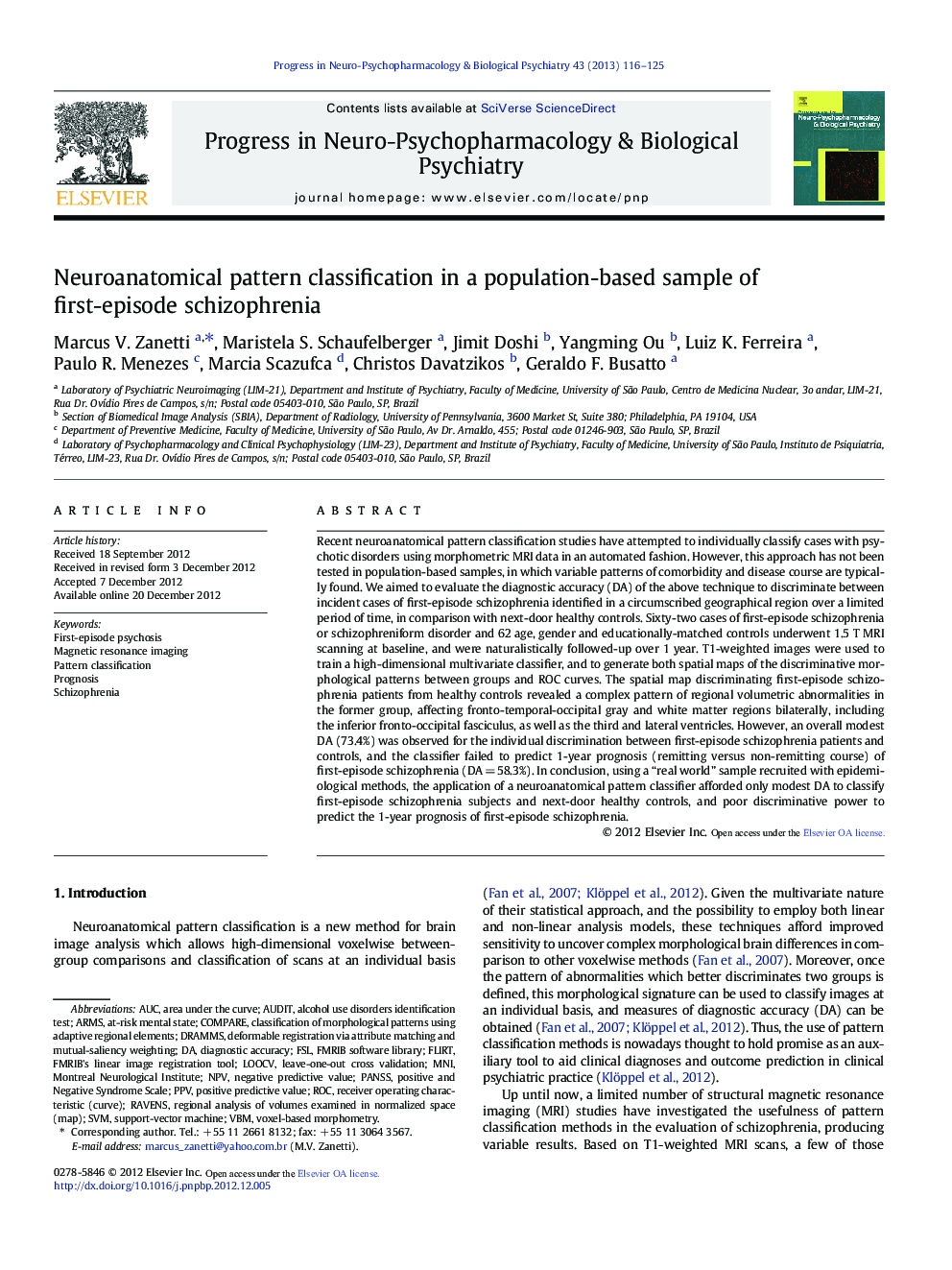| کد مقاله | کد نشریه | سال انتشار | مقاله انگلیسی | نسخه تمام متن |
|---|---|---|---|---|
| 5844728 | 1561051 | 2013 | 10 صفحه PDF | دانلود رایگان |
Recent neuroanatomical pattern classification studies have attempted to individually classify cases with psychotic disorders using morphometric MRI data in an automated fashion. However, this approach has not been tested in population-based samples, in which variable patterns of comorbidity and disease course are typically found. We aimed to evaluate the diagnostic accuracy (DA) of the above technique to discriminate between incident cases of first-episode schizophrenia identified in a circumscribed geographical region over a limited period of time, in comparison with next-door healthy controls. Sixty-two cases of first-episode schizophrenia or schizophreniform disorder and 62 age, gender and educationally-matched controls underwent 1.5Â T MRI scanning at baseline, and were naturalistically followed-up over 1Â year. T1-weighted images were used to train a high-dimensional multivariate classifier, and to generate both spatial maps of the discriminative morphological patterns between groups and ROC curves. The spatial map discriminating first-episode schizophrenia patients from healthy controls revealed a complex pattern of regional volumetric abnormalities in the former group, affecting fronto-temporal-occipital gray and white matter regions bilaterally, including the inferior fronto-occipital fasciculus, as well as the third and lateral ventricles. However, an overall modest DA (73.4%) was observed for the individual discrimination between first-episode schizophrenia patients and controls, and the classifier failed to predict 1-year prognosis (remitting versus non-remitting course) of first-episode schizophrenia (DAÂ =Â 58.3%). In conclusion, using a “real world” sample recruited with epidemiological methods, the application of a neuroanatomical pattern classifier afforded only modest DA to classify first-episode schizophrenia subjects and next-door healthy controls, and poor discriminative power to predict the 1-year prognosis of first-episode schizophrenia.
⺠First-episode schizophrenia patients and healthy controls underwent 1.5 T MRI scanning. ⺠Cases and controls were recruited through an epidemiological approach. ⺠A multivariate neuroanatomical classifier and ROC curve analysis were employed. ⺠An overall between-group classification accuracy of 73.4% was observed. ⺠The classifier failed to predict the 1-year prognosis of first-episode schizophrenia.
Journal: Progress in Neuro-Psychopharmacology and Biological Psychiatry - Volume 43, 3 June 2013, Pages 116-125
